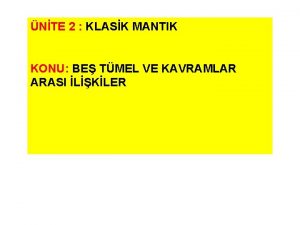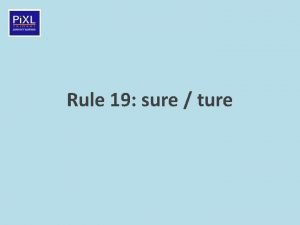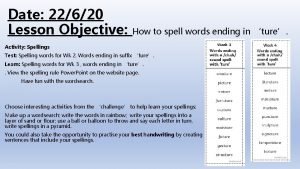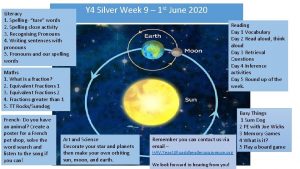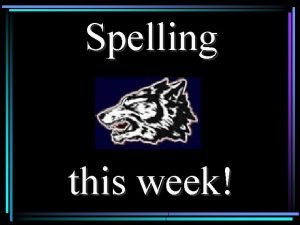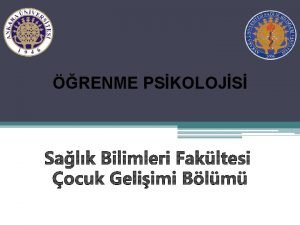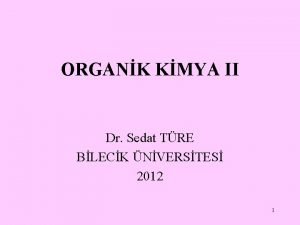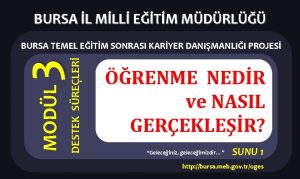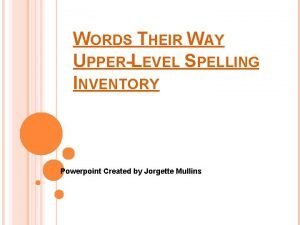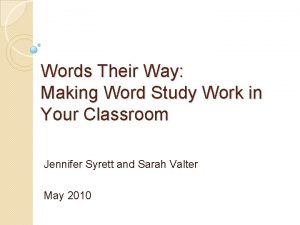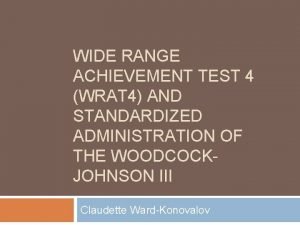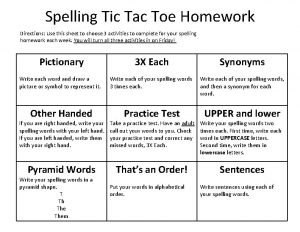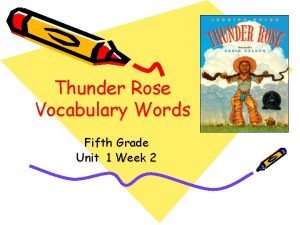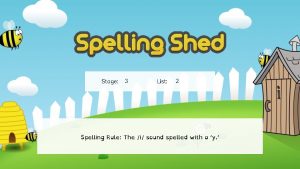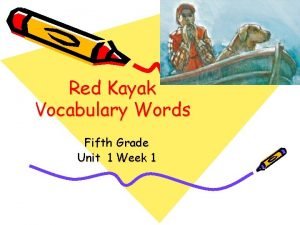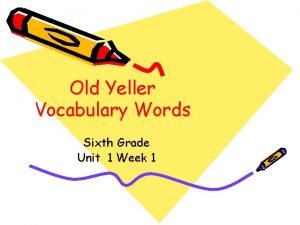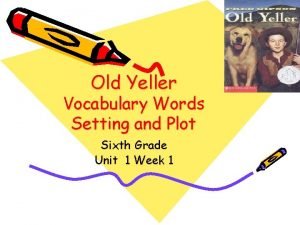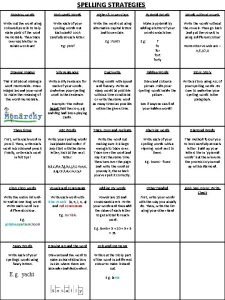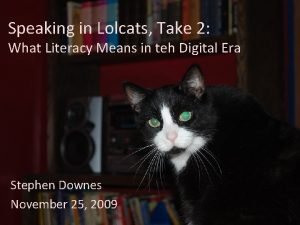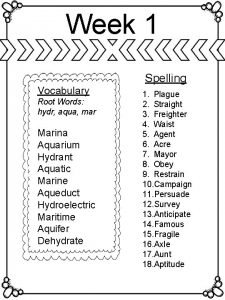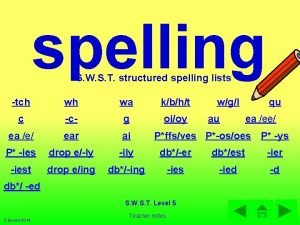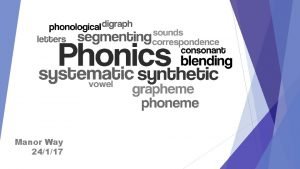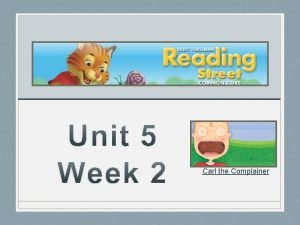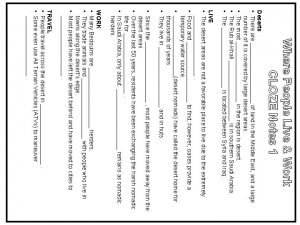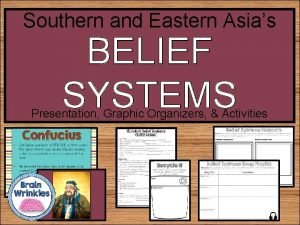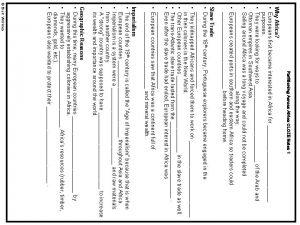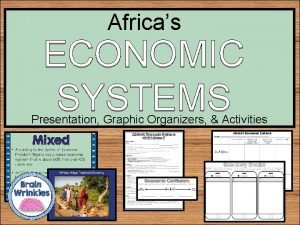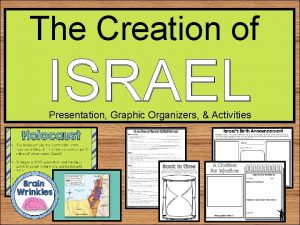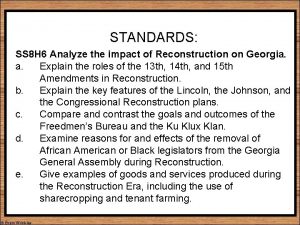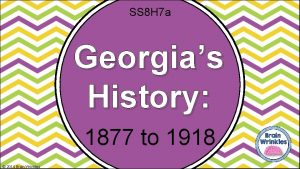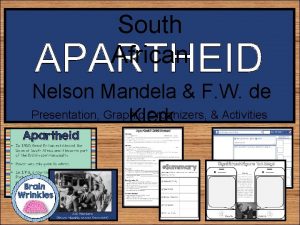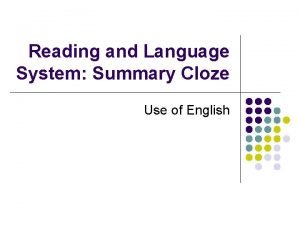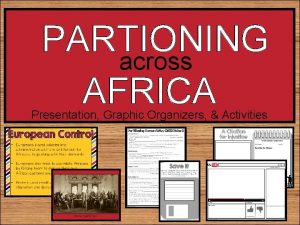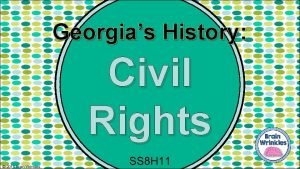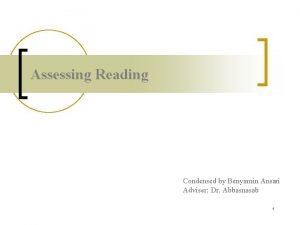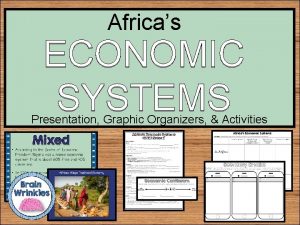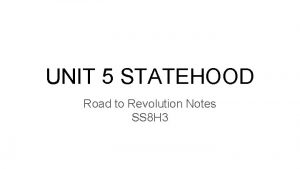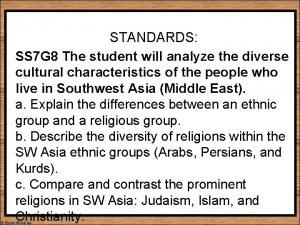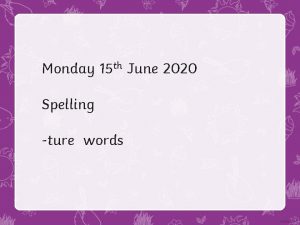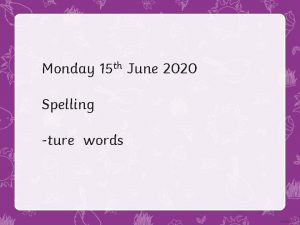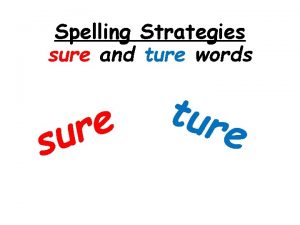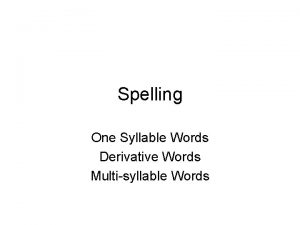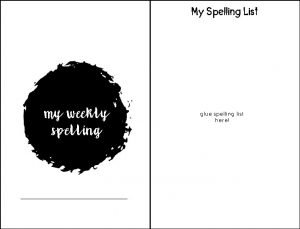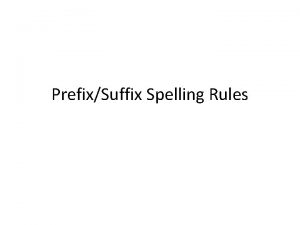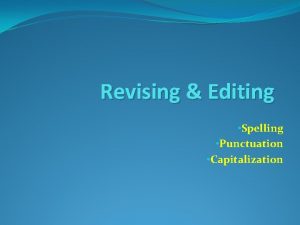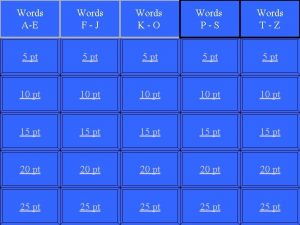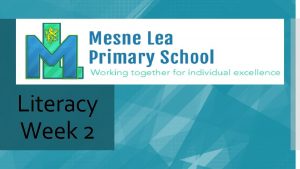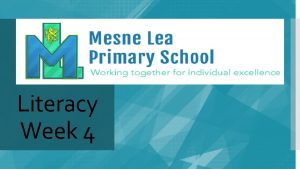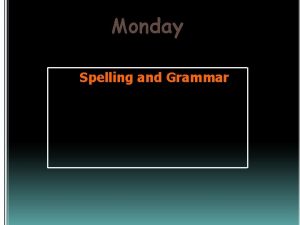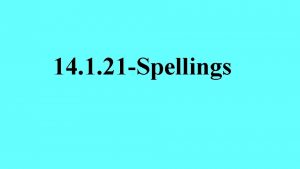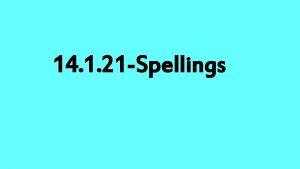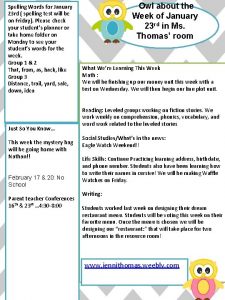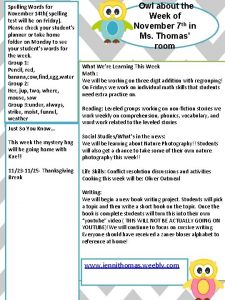Literacy 1 Spelling ture words 2 Spelling cloze



































































- Slides: 67

Literacy 1. Spelling- “ture” words 2. Spelling cloze activity 3. Recognising Pronouns 4. Writing sentences with pronouns 5. Pronouns and our spelling words Y 4 Silver Week 9 – 1 st June 2020 Reading Day 1 Vocabulary Day 2 Read aloud, think aloud Day 3 Retrieval Questions Day 4 Inference activities Day 5 Round up of the week. Maths 1. What is a fraction? 2. Equivalent Fractions 1 3. Equivalent Fractions 2 4. Fractions greater than 1 5. TT Rocks/Sumdog French- Do you have an animal? Create a poster for a French pet shop, solve the word search and listen to the song if you can! Art and Science Decorate your star and planets then make your own orbiting sun, moon, and earth. Remember you can contact us via email – HAV. Year 4@oasishendersonavenue. org We look forward to hearing from you! Busy Things 1 Sum Dog 2 PE with Joe Wicks 3 Memory Games 4 What is it? 5 Play a board game

Day 1 – Reading Background Information Plastic Pollution Write down everything you can remember from last term about plastic pollution!

Day 1 – Reading Background Information What can you remember about Hope Jones Saves the World from last week? Write around the outside all the things you remember from the start of the book. Remember the Ws Who? What? When? Why? How?

Day 1 – Reading Vocabulary Check! Vocabulary grateful boggled literally exist immediately resolution environment to live to do it now to solve a problem the place we live being thankful confused and bewildered meaning word for word


Day 1 - Maths 1. Log onto https: //vimeo. com/418154269 or scan (Or get your day 1 maths papers ready in order) 2. We have already taught Lesson 1 this week, so we are using the alternative Lesson 1 on vimeo. 3. You will need a pencil and paper to help work out the answers 4. Watch the video and practice as you go along (read through the slides practice as you go along) 5. At the end of the video or slides, answer the questions that are in your pack

Day 1 – Maths Fractions MUST be in equal parts (the same size parts).

Day 1 – Maths Imagine moving the two shaded parts to cover ¼ of the shape. There are 5 equal parts to this shape- it has 1/5 (one fifth) shaded. The stars are not equal.

Day 1 – Maths There are 5 equal parts on this number line- it is in fifths. 5/5 is equivalent to 1 whole. We can draw an arrow to show where 2/5 is on the number line.

Day 1 – Maths We can have fractions that are the same size or equal to each other. We call these EQUIVALENT FRACTIONS. The number line has 6 intervals, so we know the 1 whole is cut into 6 equal parts (the denominator is 6). What is half (1/2) or 6? 3 is half of 6. When finding equivalent fractions for half (1/2) it is easy! Is the numerator half the value of the denominator? Half of 10 is 5 - so 6/10 is not equivalent to ½. Half of 42 is 21 so that is equivalent to ½. Half 100 is 50, so 49/100 is not equivalent to ½ Half 37 is 18. 5, so 18/37 is not equivalent to ½.

Day 1 – Maths Questions

Day 1 – Maths Questions

Day 1 – Maths ANSWERS

Day 1 – Maths ANSWERS

Day 2 – Reading aloud, think aloud!

Day 2 – Reading aloud, think aloud!

Day 2 – Reading aloud, think aloud!

Day 2 – Reading aloud, think aloud!

Day 2 – Reading aloud, think aloud!

Silver Literacy Day 1 Your spelling words Words that end in the /cher/ sound are usually spelled -ture. They are either nouns or verbs. Some -ture words can be both word classes. Picture Mixture Future Creature Capture Departure Adventure Fixture Puncture furniture ACTIVITY: Draw the meaning of each of these words then explain the meaning to an adult or teddy at home.

Silver Literacy Day 2 Complete the reading passage and fill in the missing words Capture Adventure Picture Structure Creature Mixture Nature Torture

Day 2 - Maths 1. Log onto https: //whiterosemaths. com/homelearning/year-4/ or scan (Or get your day 1 maths papers ready in order) 2. Find the week you are working on – 3. Then find the lesson you are on 2. You will need a pencil and paper to help work out the answers 3. Watch the video and practice as you go along (read through the slides practice as you go along) 4. At the end of the video or slides, answer the questions that are in your pack

Day 2 - Maths Look at the bars. Can you see that the same area is shaded? The second bar has just been cut into more pieces, it is in eighths (8 pieces). Can you see how the numerator and denominator have BOTH been multiplied by 2? 1 x 2=2 4 x 2=8 x 2

Day 2 - Maths Draw out the fractions to help you! 3 X 3 3 x 3 Can you see how the numerator and denominator have BOTH been divided by 3? To check with the inverse- can you see how the numerator and denominator have BOTH been multiplied by 3?

Day 2 - Maths Can you see how 6/9 and 4/6 are the same, or equivalent? You can use a fraction wall to help find equivalent fractions. I want to find equivalent fractions for 1/3. I follow 1/3 with a straight line- I could use a ruler, or my hand. Or I could use a piece of paper to cover the rest of the fraction wall. I can see, 1/3 is equivalent to 2/6 (1/6 + 1/6 = 2/6)

Day 2 - Maths You can draw fractions to help you. Let’s investigate if this statement is always, sometimes or never true. This is true- 4 is greater than 1, and 4/7 is greater (bigger) that 1/7. Well, 2 is greater than 1 BUT, the denominator is different. Tenths are smaller than thirds- 2/10 is not greater than 1/3. So is this statement always, sometimes or never true? (Look at question 5 and explain what you think)- remember to check the answers!

Day 2 – Maths Questions

Day 2 – Maths Questions

Day 2 – Maths ANSWERS

Day 2 – Maths ANSWERS

Day 3 – Reading again and answer these retrieval questions! Q 1. What is Hope accusing adults of doing and what does she want them to do? _____________________________________________________________________________________________________________ Q 2. Name 3 things kids learn to do when they are young? 1. _________________________ 2. _________________________ 3. _________________________ Q 3 What does this picture tell you about Hope’s neighbour? _______________________________________________________________________________________________________________ Q 4 Hope’s mum didn’t want to buy so much plastic. Why did she struggles with this? Give 3 examples. 1. _______________________________________________________ 2. _______________________________________________________ 3. _______________________________________________________

Silver Literacy Day 3 Pronouns are short words that replace a noun. Examples of pronouns are; he, she, it, they, us, we, you. Pronouns are also used to avoid repeating that same name. https: //www. bbc. co. uk/teach/skillswise/pronou ns/zjxs 7 nb


Day 3 - Maths 1. Log onto https: //whiterosemaths. com/homelearning/year-4/ or scan (Or get your day 1 maths papers ready in order) 2. Find the week you are working on – 3. Then find the lesson you are on 2. You will need a pencil and paper to help work out the answers 3. Watch the video and practice as you go along (read through the slides practice as you go along) 4. At the end of the video or slides, answer the questions that are in your pack

Day 3 - Maths If I cut the bar model in half, into more pieces, what fraction would I have? 5 pieces would become 10 pieces. Our denominator would become 10. 1 piece that is shaded would become 2 pieces shaded to make the same amount. Our numerator would become 2. We can see this: 1 x 2= 2 5 x 2 = 10 These are all equivalent fractions- they have the same amount shaded in each bar.

Day 3 - Maths Remember this from yesterday? You can still draw out the fractions to help you! x 3 X 2 3 x 2 Can you see the patterns here? 3 X 3 3 x 3 Can you see how the numerator and denominator have BOTH been divided by 3? To check with the inverse- can you see how the numerator and denominator have BOTH been multiplied by 3? x 3 Usually- whatever we do to the top (numerator) we do to the bottom (denominator). What have we done to get these equivalent fractions here? Use your times tables knowledge to help you!

Day 3 - Maths These are all equivalent fractions to ¼ (a quarter) We have to do the same thing to the numerator and to the denominator to get an equivalent fraction. Remember: Whatever we do to the topwe do to the bottom! Whatever we do to the bottomwe do to the top!

Day 3 - Maths We have to do the same thing to the numerator and to the denominator to get an equivalent fraction. Remember: Whatever we do to the top-we do to the bottom! Whatever we do to the bottom- we do to the top! We only multiply or divide when making equivalent fractions! Adding and subtracting doesn’t work! Break down word problems into little steps. Draw out bars to help you! Both ropes are the same length Rosie has 3 equal pieces. 3 of Mo’s pieces are the same as 1 of Rosie’s pieces. Mo has 3 pieces of rope for every 1 of Rosie’s. He has 9 pieces of rope.

Day 3 – Maths Questions

Day 3 – Maths Questions

Day 3 – Maths ANSWERS

Day 3 – Maths ANSWERS

Day 4 – Inference! Continue to read …

Day 4 – Retrieval! Read the information above in Hope Jones’ diary. Why do you think supermarkets use some much plastic? __________________________________________________________________________________________________ __________________________________________________________________________________________________ Do you think Hope Jones’ letter to the supermarket will make a difference to how they use plastic? How else could she persuade them to use less plastic? __________________________________________________________________________________________________ __________________________________________________________________________________________________

8. 3 billion tonnes of plastic has been produced to date 6. 3 billion tonnes of plastic waste has been generated (79% of total plastic produced) This amount of plastic waste could almost double to 12 billion tonnes by 2050 Drinks bottles are one the most common types of plastic waste. Some 480 billion plastic bottles were sold globally in 2016 (1 million bottles per minute) Less than 50% of plastic bottles sold are collected for recycling Only 7% of bottles are recycled into new bottles Schemes to reduce plastic waste are planned, including deposit-return schemes and improvement of free drinking water supplies. Research suggests that about 10 m tonnes of plastic currently ends up in the oceans each year. Plastic waste accumulates in areas of the ocean where winds create swirling circular currents, known as gyres, which suck in any floating debris. The best known of these gyres is in the North Pacific Ocean. This ocean pollution is mostly made up of plastic fishing netting and tiny fragments of plastic- known as microplasticswhich become suspended in the water and are described as ‘plastic soup’. An operation to clean up the North Pacific gyre, known as ‘Ocean Cleanup’ is due to commence in 2018. Plastic is durable and hard-wearing but, as a result, takes many years to biodegrade. Wind, water and sunlight break plastics down into tiny fragments that pollute beaches, waterways, ocean and the food chain.

Silver Literacy Day 4



Day 4 - Maths 1. Log onto https: //whiterosemaths. com/homelearning/year-4/ or scan (Or get your day 1 maths papers ready in order) 2. Find the week you are working on – 3. Then find the lesson you are on 2. You will need a pencil and paper to help work out the answers 3. Watch the video and practice as you go along (read through the slides practice as you go along) 4. At the end of the video or slides, answer the questions that are in your pack

Day 4 - Maths You might think this is less than one whole, but look carefully- We don’t have to stop at 1 with fractions. 2+5=7 7/7 is one whole or 1 2/6 + 5/6 = 7/6. We can add 2/7 to make 9/7 (7 + 2 = 9) 7 sixths (7/6) is equal to 1 whole and 1/6

Day 4 - Maths Any fraction where the numerator is greater than the denominator is called an Improper fraction. We know that 12 is equal to 2 x 6. 12/6 is equivalent to 2 or 2 wholes. We could have taken 6 sixths away from 12 sixths, because 6 sixths (6/6) are a whole 1. Then we see how many sixths are left. We would have had another 6 sixths (6/6) left, which is a second whole 1.

Day 4 - Maths We know that 18 is equal to 3 x 6. 18/6 is equivalent to 3 or 3 wholes. We could have taken 6 sixths away from 18 sixths, because 6 sixths (6/6) are a whole 1. Then we see how many sixths are left- 12 sixths (12/6). We can take another 6 sixths (6/6) away from 12 sixths (12/6), which is a second whole 1. We have 6 sixths (6/6) left which gives us 3 or 3 wholes. We don’t have to draw out the bars- there’s a quicker way! 3 x 6 = 18 18 divided by 6 is 3. When we divide 18 sixths by 6 the denominator of sixths- we get 3. There are 3 or 3 wholes in 18 sixths (18/6)

Day 4 - Maths 4 x 5 =20 20 divided by 5 is 4. When we divide 20 fifths by 5 - the denominator in fifths- we get 4. There are 4 or 4 wholes in 20 fifths (20/5) We don’t have to draw out the bars- there’s a quicker way!

Day 4 - Maths SOMETIMES the numerator is not divisible by the denominator: We can’t divide 10 by 6; but there is still 1 whole (6/6) with 4 sixths (4/6) leftover. We don’t have to draw out the bars- there’s a quicker way! We can subtract 6/6 from 10/6 which gives us 4/6 left over. You can keep taking whole ones from an improper fraction until you cannot do it any more, the remaining number will be the numerator of the fraction you have left. 21/6 would give us 3 wholes with 3/6 remaining.

Day 4 – Maths THINK- would you rather have half a pizza or 1 hundredth of a pizza? One is much bigger! Both fractions have the same denominatorthey are in thirds. I can convert them into improper fractions to compare: 4/3 is less than 5/3 I can turn these improper fractions into mixed fractions. 24 divided by 6 = 4 16 divided by 4 = 4 They both have 4 wholes. Tip- draw out bars to help you compare fractions. It might help you to convert them into mixed fractions with whole ones, or improper fractions to compare fractions with the same denominator.

Day 4 – Maths Questions

Day 4 – Maths Questions

Day 4 – Maths ANSWERS

Day 4 – Maths ANSWERS

Day 5 Create written or video presentations using the facts and figures about plastic pollution. Investigate and/or research how long different materials take to biodegrade. Write instructions for how to reduce plastic waste. Design a poster which start by encouraging the whole school to collect 100 pieces of single-use plastic and then see how many you can collect by the end of the school year.

Silver Literacy Day 5 Write the pronoun for each of your spelling words. Then write your spelling words and its pronoun in sentences. E. G. Picture = it The picture was not hanging straight. It looked like it was going to fall. Mixture Future Creature Capture Departure Adventure Fixture Puncture furniture

Day 5 - Maths 1. Log onto Sumdog or TT Rock Stars or download the app (If you don’t have access – go to the next page for some questions ) 2. You will need a pencil and paper to work out the answers If you have lost your log in details please e mail your class teacher or ask for them when they ring next Page 55

Day 5 – Maths Questions

Day 5 – Maths ANSWERS Page 57

French As-tu un animal? Have you got an animal? v a cat: un chat un shar v a dog: un chien un sh-ya v a fish: un poisson un pwe-son v a Guinea pig: un cochon d'Inde un cu-shon don-t v a rabbit: un lapin (female: une lapine) un lep-an v a mouse: une souris une sore-ee v a hamster: un hamster un ham-stair v a bird: un oiseau un wez-oo v a parrot: un perroquet un perro-keh https: //www. youtube. com/watch? v=Pgz. Puf. N 4 r 3 c Mrs Francis-Barnaby wants to open a pet shop in France. Can you design a poster with all the animals she could sell?

French As-tu un animal? Have you got an animal? Can you find all the animals?

Art and Science Don’t forget to decorate and colour in your planets and star
 Ilinti ne demek mantık
Ilinti ne demek mantık Words that end in sure and ture
Words that end in sure and ture Ture spelling rule
Ture spelling rule Words with ture
Words with ture Suffixe ure
Suffixe ure Türe özgü hazır bulunuşluk
Türe özgü hazır bulunuşluk Meta yönlendiriciler
Meta yönlendiriciler Ileriye ket vurma
Ileriye ket vurma Literacy skills test spelling
Literacy skills test spelling Media literacy vs information literacy
Media literacy vs information literacy Formative assessment analyze and explain this illustration
Formative assessment analyze and explain this illustration Value of people media
Value of people media Cyber literacy and digital literacy
Cyber literacy and digital literacy Words their way upper level spelling inventory
Words their way upper level spelling inventory Making words lists
Making words lists Wrat spelling test words
Wrat spelling test words Exhibit past tense
Exhibit past tense April spelling tic tac toe
April spelling tic tac toe How to spell bee in spanish
How to spell bee in spanish Is home run a compound word
Is home run a compound word Thunder rose vocabulary
Thunder rose vocabulary Stage 3 spelling words
Stage 3 spelling words Red kayak spelling words
Red kayak spelling words Old yeller vocabulary words
Old yeller vocabulary words Old yeller plot diagram
Old yeller plot diagram Lewis and clark and me vocabulary
Lewis and clark and me vocabulary Thunder rose spelling words
Thunder rose spelling words Backwards spelling bee
Backwards spelling bee Spelling words
Spelling words Hydr armory
Hydr armory Soft c words list
Soft c words list Tricky words list
Tricky words list Spelling lesson 2: content words
Spelling lesson 2: content words Prefix re words
Prefix re words Cloze maker
Cloze maker Cloze generator
Cloze generator Containment of communism cloze notes
Containment of communism cloze notes Se asia geography cloze notes 1
Se asia geography cloze notes 1 Southern and eastern asia's belief systems answer key
Southern and eastern asia's belief systems answer key Rebuilding japan cloze notes
Rebuilding japan cloze notes African geography cloze notes
African geography cloze notes Next generation nclex
Next generation nclex Latin america's geography cloze notes 1
Latin america's geography cloze notes 1 Ethnic groups cloze notes 1 answer key
Ethnic groups cloze notes 1 answer key Banked cloze
Banked cloze Environmental issues cloze notes 1 answer key
Environmental issues cloze notes 1 answer key Africa's economic systems comprehension check
Africa's economic systems comprehension check The creation of israel cloze notes answer key
The creation of israel cloze notes answer key Substitution tables for teaching english
Substitution tables for teaching english Reconstruction cloze notes 1
Reconstruction cloze notes 1 Ss6g7 brainwrinkle
Ss6g7 brainwrinkle Georgia history timeline 1877-1919
Georgia history timeline 1877-1919 Sw asia geography cloze notes 1
Sw asia geography cloze notes 1 Brain wrinkles southern and eastern asia
Brain wrinkles southern and eastern asia Apartheid
Apartheid Summary cloze exercise
Summary cloze exercise Partitioning across africa cloze notes
Partitioning across africa cloze notes Monotheism chart judaism christianity islam
Monotheism chart judaism christianity islam Cloze activity generator
Cloze activity generator Civil rights cloze notes 1
Civil rights cloze notes 1 Brain wrinkles social studies answer key
Brain wrinkles social studies answer key Environmental issues graphic organizer
Environmental issues graphic organizer Cloze notes africa government
Cloze notes africa government Perceptive reading examples
Perceptive reading examples Africa's economic systems cloze notes 1
Africa's economic systems cloze notes 1 American revolution cloze notes
American revolution cloze notes Ethnic groups cloze notes 1
Ethnic groups cloze notes 1 Sw asia economies cloze notes 1
Sw asia economies cloze notes 1
